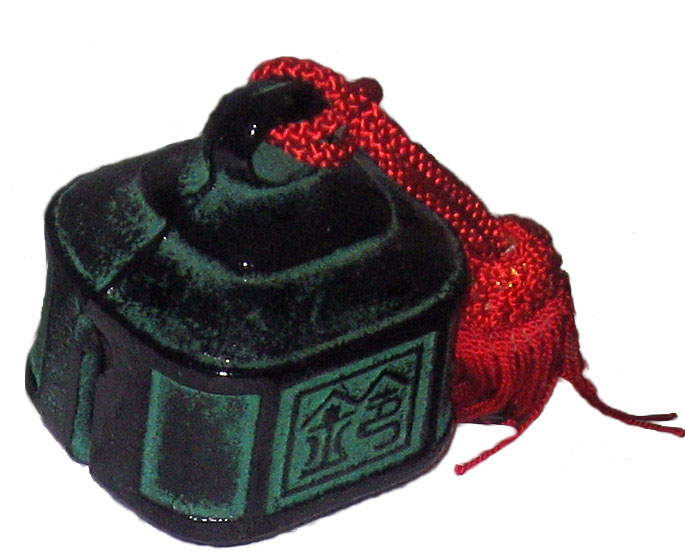#station_bell

Station bell
Under the Japanese ritsuryō system, station bells or post bells were bells of red copper issued by the central government or by local provincial government offices to travelling officials or messengers known as ekishi (駅使). Functioning as a proof of identity, they allowed them to procure horses and labour at post stations. These post stations were located every 30 ri each providing between five and twenty messenger horses depending on the grade of the road. Depending on the rank of the emissary, the bells were marked with a number of notches regulating the number of horses that could be requested. A prince of royal blood of first rank would receive ten horses. On urgent dispatches the ekishi would ride with the bells ringing in order to be able to change horses at any time of day or night without delay. These bells were also known as post road bells or stable bells. The system was established in the Taihō Code from 701 and was in use until the end of the 12th century or the end of the Heian period when it fell in disuse together with the demise of the centralized state.
Tue 28th
Provided by Wikipedia
This keyword could refer to multiple things. Here are some suggestions: